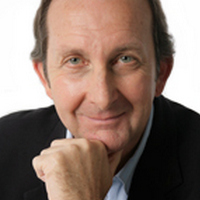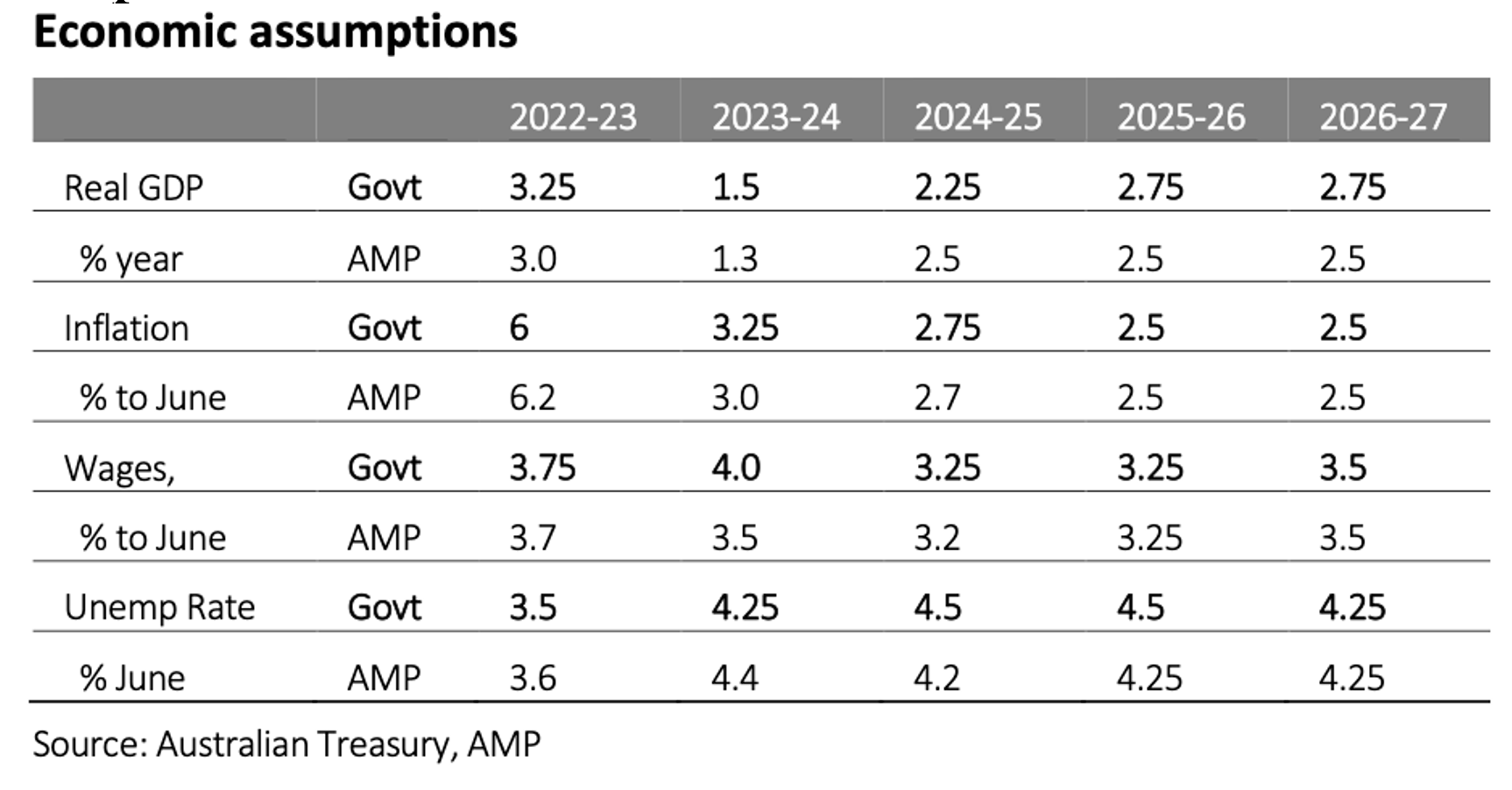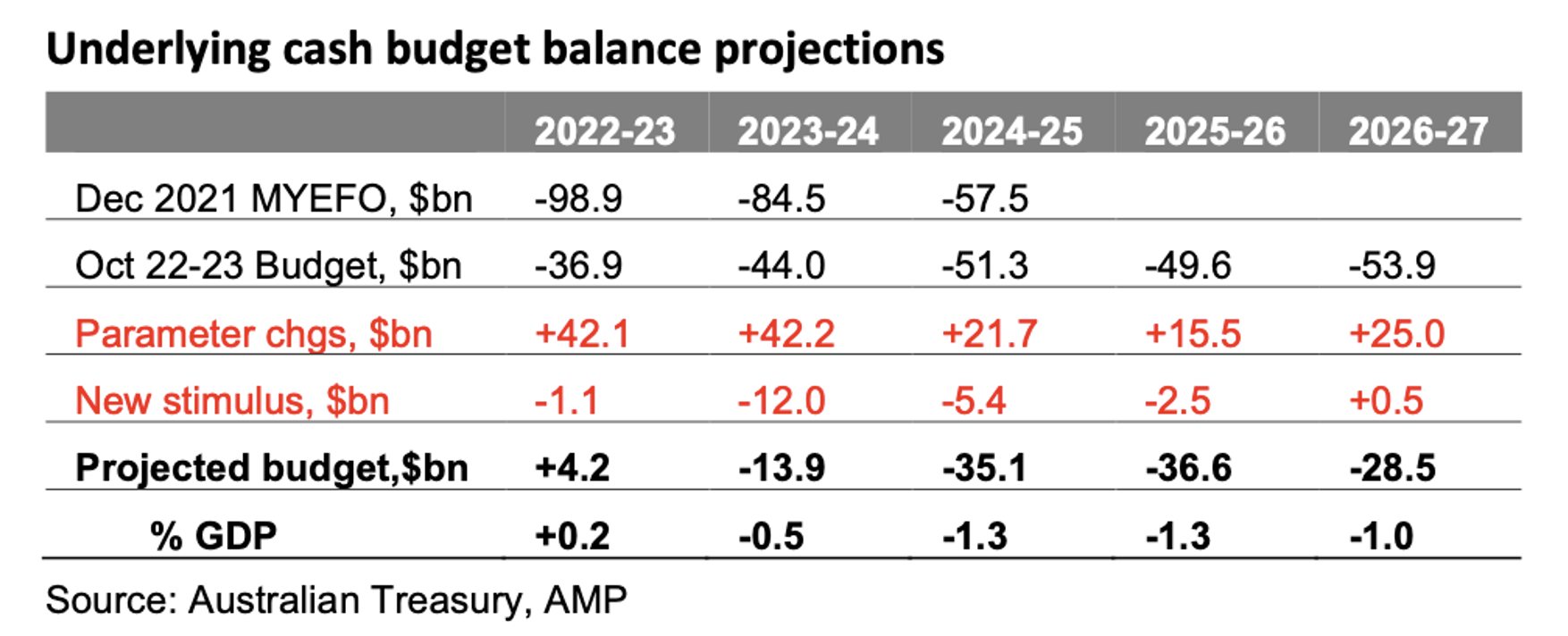

In rough times, this is a good news Budget for most Australians, with a predicted surplus showing up for the current financial year. Welfare recipients have been helped in coping with inflation’s impact on their cost of living and our ‘new boy’ Treasurer Dr Jim Chalmers can boast about the fastest return to surplus since World War II!
But those super members with big balances are going to have to duck for cover
as they will be taxed more heavily from 1 July 1 2025. More on that later.
Here are the big initiatives in a nutshell, summed up by AMP’s chief economist, Shane Oliver:
Budget savings include:
The news on the economy is good, with no recession in sight and inflation down to 3.25% by next financial year. This means we can expect interest rate cuts, probably in calendar year 2024 but they could come earlier, if the mortgage cliff ends up being steeper than Treasury and RBA are guessing.
Growth this financial year is tipped to come in at a strong 3.25% but it tumbles to 1.5% in 2023-24. That’s the cliff effect, with spending dropping as many home loan people on low fixed rates face higher variable rate loan repayments. A slower world economy also won’t help growth and the Budget’s bottom line. This table sums up the economic story going forward, but it is a product of the best guesses of Treasury economists and Shane has put in his team’s forecasts so we can compare views on our future.

For those who like to see Treasury’s best guesses on what will happen to future Budget bottom lines, here’s another table to peruse. You’ll notice that the surplus doesn’t last long, with next year’s Budget going back into a deficit of $13.9 billion and it blows out to $35.1 billion by 2024-25. That’s when we could see a recession or a serious slowdown, if not here but overseas.

Where did this good news Budget get its money from?
The AFR’s Phil Coorey put this Budget turnaround into historical and economic context. “In the last year of the Morrison government, as the economy reopened and Scott Morrison and Josh Frydenberg turned off the spending measures as easily as they had been turned on, the deficit closed from $134 billion in 2020-21 to $32 billion for 2021-22,” he reminded us. “That consolidation was propelled by the same factors that drove the comeback over which Chalmers presided in his first year as Treasurer – predominantly high commodity prices, strong company tax receipts in the non-mining sector, and a strengthening labour market that resulted in more income tax and lower welfare payments.”
This underlines how important our economic fate will be linked to the strength of the global economy. One factor not allowed for, which could be a surprise future positive, is the eventual ending of the Ukraine war. This would not only unleash recovery spending but oil prices would fall. It’s something worth praying for, for both humanitarian and economic reasons!
To the super wack for the wealthy or the super-savers (some 80,000 of them) and yes, the February promises to tax the earnings on super balances over $3 million will kick off on 1 July 2025. And Treasury thinks this measure will net Dr Jim about $2.3 billion a year.
As an example, if you had $4 million in your super balances, the earnings on $3 million would be taxed at 0% up to your pension cap, which for many would be $1.6 million. The earnings on the next $1.4 million would be 15% and the earnings on the last $1 million would be 30%.
That one Aussie with a whopping $100 million in super will be looking for some alternatives for their $97 million, which will now be hit with a 30% tax on earnings!
But it gets worse, with the AFR’s Hannah Wootton telling us that the change “…will tax unrealised gains, such as on property, which farmers, small businesses and industry groups have warned could force investors to sell assets.”
This will be the subject of heated debate in Parliament and even Labor voters with property and other assets in super could ponder the fairness of taxing unrealised gains.
And to keep the pain coming, the $3 million cap won’t be indexed, which could be a big issue for young people today who’ll be retiring in 30 years’ time. That said, Treasury modelling suggests the 30% tax rate could apply to 10% of super savers within 30 years. The problem is Treasury isn’t a great modeller.
Remember, in October, the pointy-headed economists there thought this $4 billion surplus was going to be a $37 billion deficit!
While still on super, the Budget brings $40 million to help workers reclaim unpaid or underpaid super, which is a good use to taxpayers’ money. And to reduce the chances of this in the future, small businesses will have to pay super with their employee’s wages.
Does the Budget help cut inflation? Not really. If former Treasury economist Chris Richardson’s rule of thumb is right, “…which says a $6 billion increase in annual net government spending requires about one 0.25 of a percentage point interest rate rise, the budget likely means that the RBA cash rate will need to be higher for longer.” (AFR)
Why? The AFR’s John Kehoe has done the sums and reveals the following: “Labor has injected a discretionary extra $44 billion into the economy over five years since forming government [and] this excludes the automatic inflation indexation of welfare and other payments.”
The only thing that might save us from too many more rate rises could be the impact of the mortgage cliff, which I think many economists, not close enough to the real world, are underestimating how this will hit and hurt the economy.